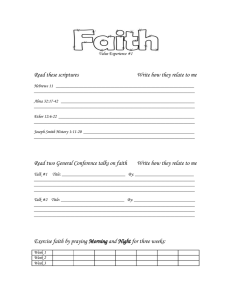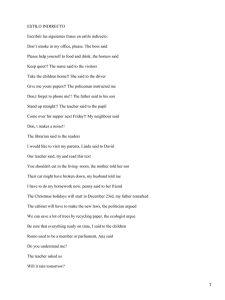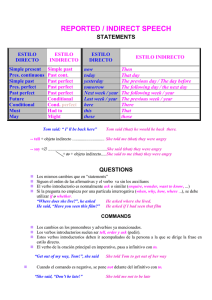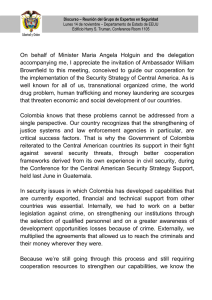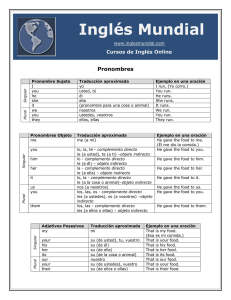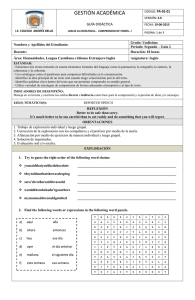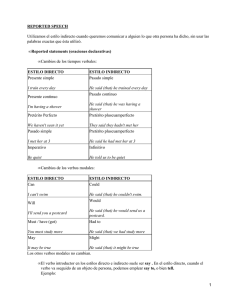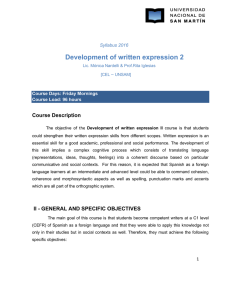Lesson 49 - Direct and Indirect Speech
Anuncio
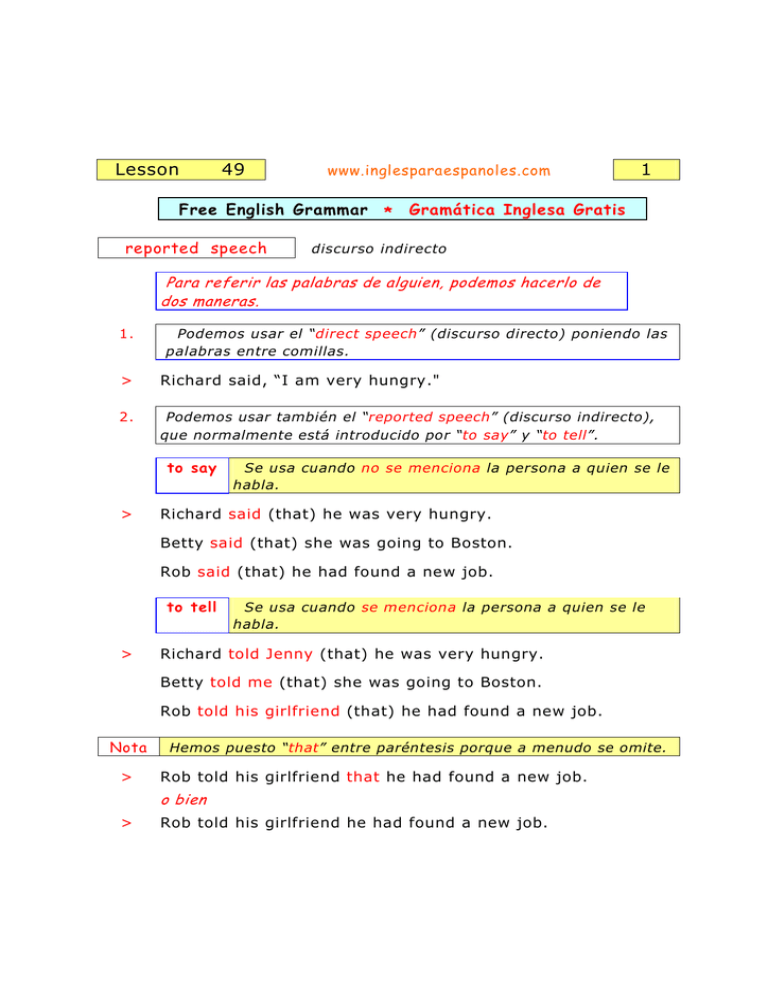
Lesson 49 www.inglesparaespanoles.com Free English Grammar reported speech * 1 Gramática Inglesa Gratis discurso indirecto Para referir las palabras de alguien, podemos hacerlo de dos maneras. 1. Podemos usar el “direct speech” (discurso directo) poniendo las palabras entre comillas. > Richard said, “I am very hungry." 2. Podemos usar también el “reported speech” (discurso indirecto), que normalmente está introducido por “to say” y “to tell”. to say > Se usa cuando no se menciona la persona a quien se le habla. Richard said (that) he was very hungry. Betty said (that) she was going to Boston. Rob said (that) he had found a new job. to tell > Se usa cuando se menciona la persona a quien se le habla. Richard told Jenny (that) he was very hungry. Betty told me (that) she was going to Boston. Rob told his girlfriend (that) he had found a new job. Nota > Hemos puesto “that” entre paréntesis porque a menudo se omite. Rob told his girlfriend that he had found a new job. o bien > Rob told his girlfriend he had found a new job. Lesson 49 Free English Grammar reported speech 2 www.inglesparaespanoles.com * Gramática Inglesa Gratis discurso indirecto Cuando se pasa del “direct speech” al “reported speech" se cambian los tiempos verbales. Present simple > Bob said, “For breakfast I usually have a bowl of cereal.” Past simple > discurso directo Karen said , “I went to the Grand Canyon last week.” Past perfect > discurso indirecto Bill told me that he was reading an interesting book. Past simple > discurso directo Bill told me, “I am reading an interesting book.” Past continuous > discurso indirecto Bob said that for breakfast he usually had a bowl of cereal. Present continuous > discurso directo discurso indirecto Karen said that she had gone to the Grand Canyon the week before. >>> Lesson 49 www.inglesparaespanoles.com Free English Grammar reported speech Present perfect > discurso indirecto discurso directo discurso indirecto David told me that he had quit smoking. Past perfect > discurso directo discurso indirecto Laura told me that she had just fallen asleep when I phoned. Present perfect continuous > discurso directo Frank said, “I will finish my project by Saturday.” Present conditional > discurso indirecto Mark said lately he had been working 14 hours a day. Future > discurso directo Mark said, “Lately I have been working 14 hours a day.” Past perfect continuous > (no cambia) Laura told me, “I had just fallen asleep when you phoned.” Past perfect > Gramática Inglesa Gratis David told me, “I have quit smoking.” Past perfect > * 3 discurso indirecto Frank said he would finish his project by Saturday. Lesson 49 www.inglesparaespanoles.com Free English Grammar reported speech * 4 Gramática Inglesa Gratis discurso indirecto Cuando se pasa del “discurso directo” al “discurso indirecto”, además de cambiar los tiempos verbales, hay que hacer otros cambios. discurso directo discurso indirecto now then, at that time today that day tomorrow the following day, the next day, a day later yesterday the previous day, the day before next month the following month, the next month, a month later next year the following year, the next year, a year later last month the month before, the previous month, the preceding month last year the year before, the previous year, the preceding year three weeks ago three days before, three days earlier here there this that these those my - mine his / her our - ours their - theirs - his / hers
